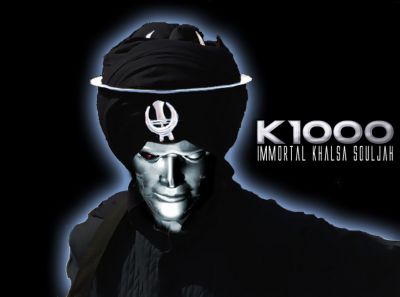Bhagat Singh Shaheed


Sewa desh di barhi aukhi, gallan karneeya terh sukhaliya ne.
Jinha desh sewa vich per paya, ounha lakh museebata chaliyan ne.
Serving your country is very difficult, it is far easier to talk about it.
Those who have stepped into this service, have come across many difficulties.
This Friday (23rd March) sees the anniversary of the hanging of the famous indian freedom fighter Shaheed Bhagat Singh. He was charged with the murder of Mr Sanders - a junior officer. Bhagat Singh's initial target was Mr Scott, who had earlier severley beaten Lala Lajpat Rai during a silent protest march.
Instead of finding the root cause for discontent of Indians, the British government took to more repressive measures. Under Defense of India Act, it gave more powers to police, to arrest persons to stop processions with suspicious movements and actions. The act brought in the council was defeated by one vote. Even then it was to be passed in the form of an ordinance in the interest of the public. No doubt the British were keen to arrest all leaders who opposed its arbitrary actions and Bhagat Singh who was in hiding all this while, volunteered to throw a bomb in the central assembly where the meeting to pass ordinance was being held. It was a carefully laid out plot, not to cause death or injury but to draw the attention of the government, that the modes of its suppression could no more be tolerated. It was agreed that Bhagat Singh and Batukeshwar Dutt would court arrest after throwing the bomb.
It was a forgone conclusion in 1929 April 8th at Delhi Central Assembly. Singh and Dutt threw handouts, and bombed in the corridor not to cause injury and courted arrest after shouting slogans Inquilab Zindabad (Long Live, Revolution!)
Meanwhile the killers of Sanders were identified with the treachery of Bhagat Singh's friends who became "Approvers." Bhagat Singh thought the court would be a proper venue to get publicity for the cause of freedom and did not want to disown the crime. But he gave a fiery statement giving reasons for the killing which was symbolic of the freedom struggle. He wanted to be shot like a soldier and not die at gallows . But, his plea was rejected and he was hanged on 23rd March 1931. He was 24.
Bhagat Singh became a legendary hero with the masses. Innumerable songs were composed about him and the youth throughout the country made him their ideal. He became a symbol of bravery and a martyr for free India..
There have been vrious sources which claim he was an aethiest. However Bhai Randhir Singh in his book "chitthiyan Jail Diyan" claimed that Bhaghat re took amrit whilst in prison awaitng his hanging. The picture above also shows him with long hair.
There have been many movies retelling the story of Bhaghat Singh, but none seem to confirm Randhir Singh's account.
Below are a couple of clips from Manoj Kumars classic "Shaheed":
Mera Rang De Basanti Chola:
Sarfaroshi Ki Tamanna:








2 comments:
Who wrote Sarfoaroshi ki tamana. Some of the lines are so powerful like "The hope of death has pulled us here" "Who can I tell what is in my heart?" Beautiful.
I agree the lyrics are very powerful.
This particular version rendered by Rafi, is a classic, and yet sometimes is not given the kind of recognition it deserves in his all time bests.
The poem has been credited to another freedom fighter called Ramaprasad Bismil. He was hanged for his part in the kakori Train Conspiracy. He was a n acquintance of Chandrashekhar Azaad, and had a great influence on Bhagat Singh too.
Post a Comment